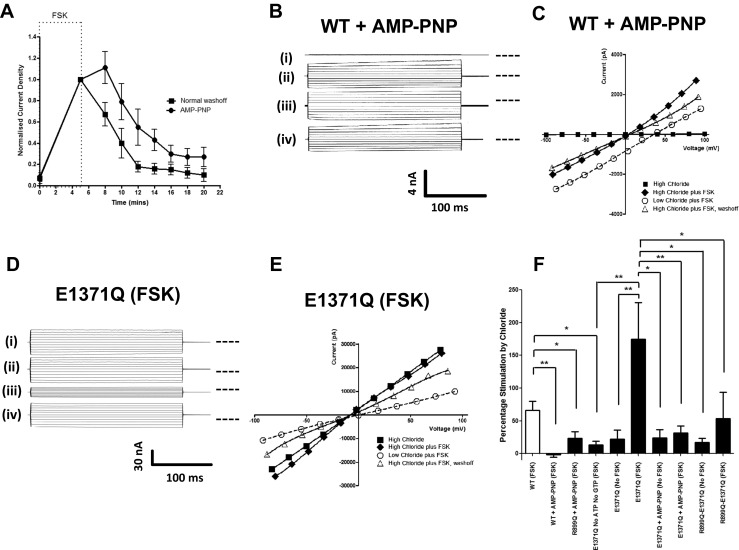Fig. 3.

Gating of CFTR by [Cl−]o requires ATP hydrolysis and phosphorylation. a AMP-PNP locks WT CFTR in the open state. Normalised whole cell current density is plotted against time during FSK stimulation (indicated by the dashed line) and the subsequent washoff in the absence (squares, n = 4) and presence (circles, n = 4) of 1 mM AMP-PNP in the pipette solution. b, d Representative fWCR current recordings measured between ±100 mV in 20 mV steps from HEK cells transfected with WT CFTR plus AMP-PNP and E1371Q CFTR, as indicated. The current traces are from the top down: (i) unstimulated in 155.5 mM [Cl−]o, (ii) forskolin (FSK)-stimulated in 155.5 mM [Cl−]o, (iii) FSK-stimulated in 35.5 mM [Cl−]o and (iv) FSK-stimulated in 155.5 mM [Cl−]o. Dotted line to the right of the current traces indicates zero current level. c, e Representative I-V plots for the data presented in b and d. f Percentage stimulation of either basal or FSK-activated currents by [Cl−]o for WT CFTR (n = 24), the ECL4 mutant R899Q, the hydrolysis-deficient mutant E1371Q and the double-mutant R899Q-E1371Q (see Fig. 1) under different conditions as indicated (n = 4–8). Data are means ± SEM. *p < 0.05, **p < 0.01, ***p < 0.001 between indicated datasets
